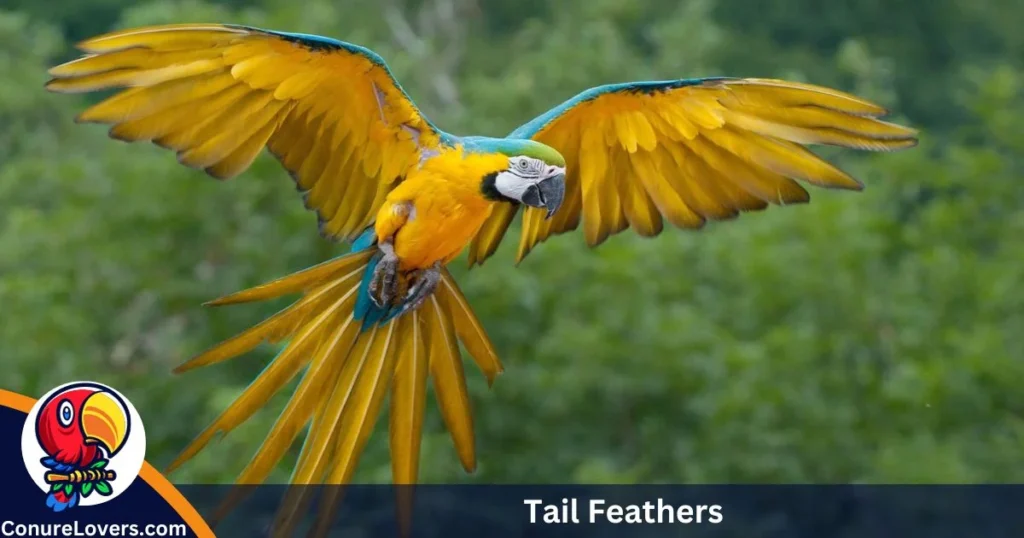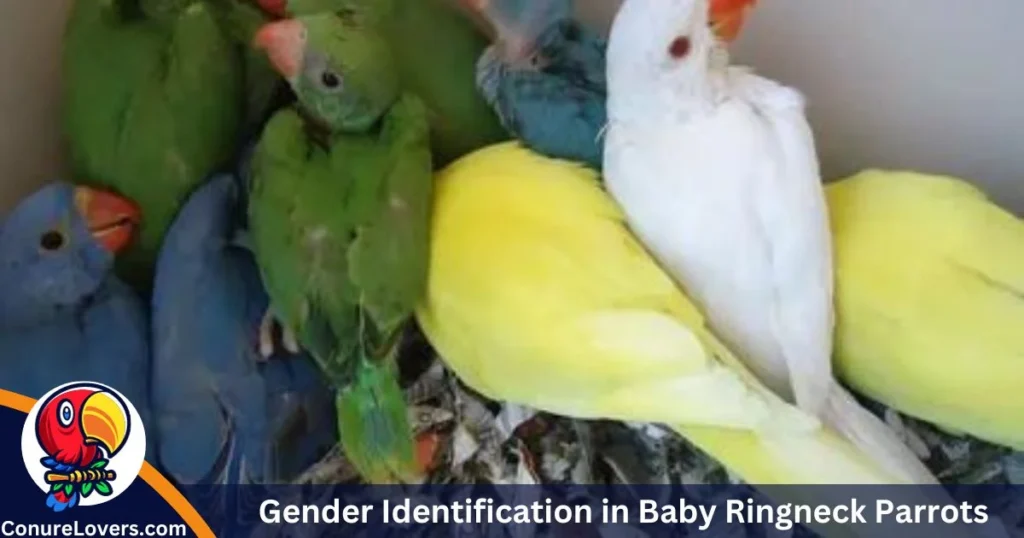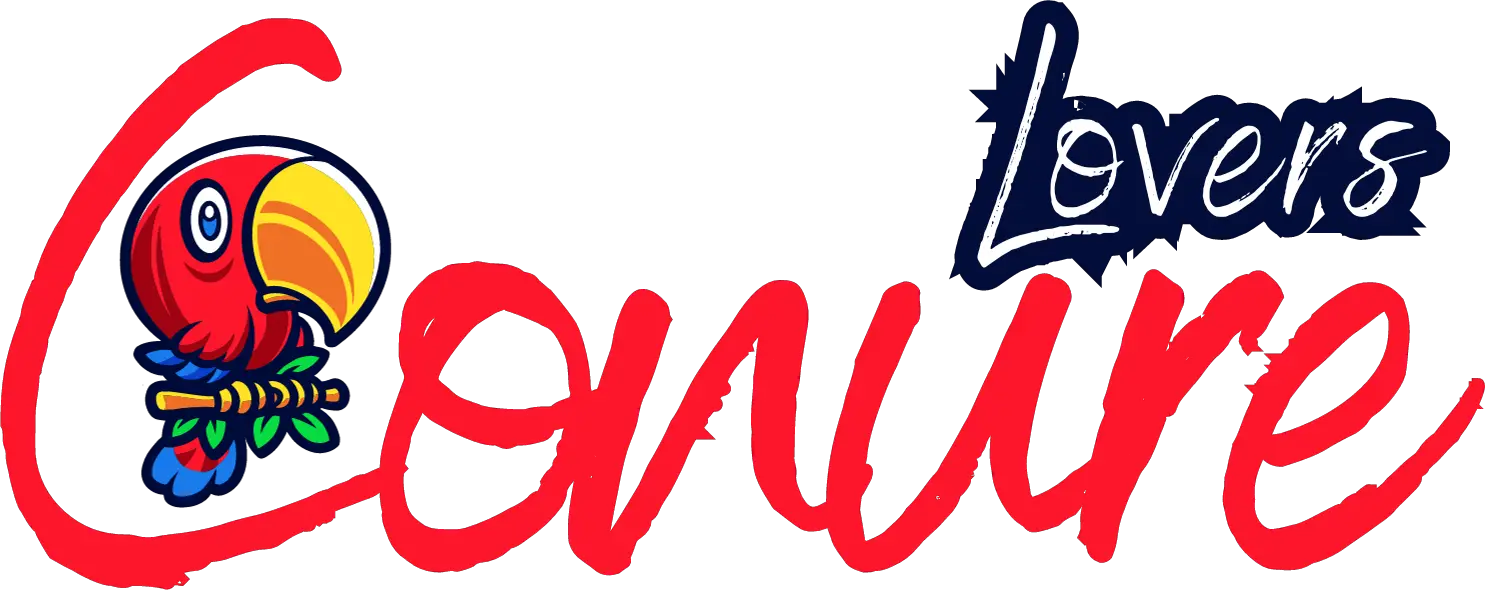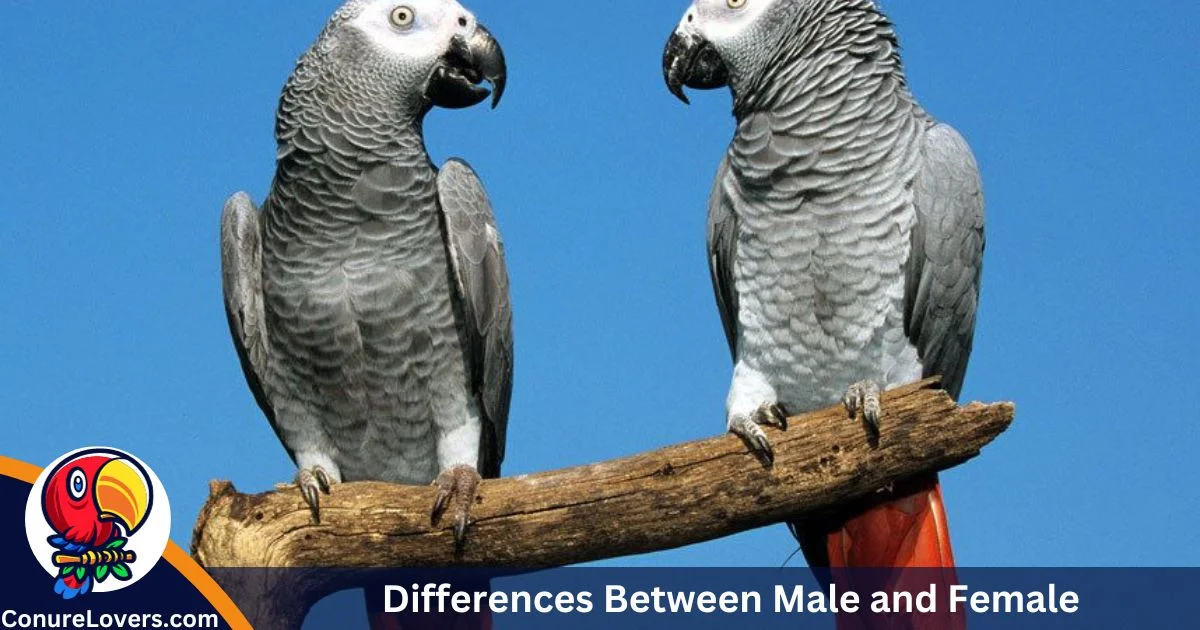When we talk about the “Ringnecks” birds, it means you can tell if they are male or female by looking at them. The male Ringneck gets a bright, dark ring around its neck as it grows up. But the female only gets a very faint ring, and this ring only shows up once the bird is old enough to have babies.
In lots of parrot crews, guys and gals look pretty alike. But in some gangs, there’s a style difference. Check out Indian and African ringneck parrots – their dudes and dudettes stand out.
Guys flaunt a flashy neck ring that gets wider by the lower beak. On the flip side, gals either sport a super faint ring or none at all. Plus, the guy ringnecks usually outsize the gals. So, it’s easy to spot who’s who in the bird squad!
Methods of Gender Identification in Ringneck Parrots
Ringnecks are kind of like fashionistas – they’re sexually dimorphic, meaning guys and gals sport different looks. These differences pop up when they hit the cool age of 2-3 years. That’s why spotting a ringneck, a boy or a girl, can be like playing detective with baby birds.
To unveil the gender mystery, there are a few methods:
- Physical Check: Take a peek at their features.
- Behavior Spy: Keep an eye on their actions – they might spill the gender beans.
- DNA Test: When all else fails, go for a DNA test.
Decoding the ringneck secret – it’s like bird detective work!
Physical Differences Between Adult Male and Female Ringnecks

| Physical Characteristics | Male | Female |
| Neck Ring | Black and prominent | Not so much – maybe faint |
| Colour | Bright green and shiny | Slightly olive green |
| Body Shape and Size | Broad and heavy | Narrow and lighter |
| Head | Square-shaped | Round-shaped |
| Beak | Broad | Thin |
| Tail Feathers | Slightly longer | Smaller than males |
| Pelvic Bones | Short gap between | Greater gap between as |
| vent bones | compared to males | |
| Feet | Thick and dark | Thin and bright |
There you have it – a quick guide to decoding the gender vibes of adult ringnecks!
1. Neck ring
Spotting the superstar difference? It’s all about the neck bling! Male ringnecks rock a neck ring, while the ladies keep it sleek – no ring for them. This fancy feature starts showing off at 16-18 months and struts its stuff fully by 24-30 months. It’s like their way of saying, “Look at me, I’m ready to stand out in the birdie fashion scene!” [1]
2. Head
Time for a little birdwatching detective work! Female ringnecks rock the round head vibe, while the guys sport a square-like noggin. Take a closer peek, and you’ll notice the dudes flaunting slightly bigger heads than their female counterparts. It’s like their way of saying, “Square heads rule!”
3. Colour
Ringnecks are all about that green life! The guys strut in with a vibrant, bright green coat, while the gals keep it cool in a slightly more subdued, olive green shade. It’s like a green fashion show, with each gender bringing its own shade to the runway!
4. Body Shape and Size
Meet the ringneck crew – where the guys flex their muscles with a sturdy build, showcasing a muscular vibe. On the other wing, the gals might appear a tad smaller and thinner. So, when you size up the scene, it’s clear – the dudes bring the big and bold look, making them the heavyweight champs in the ringneck world!
5. Feet
Stepping into the world of ringnecks, notice those feet! The dudes sport feet that mean business – stronger and darker, giving off a bold and sturdy vibe. Meanwhile, the ladies keep it a bit lighter on their toes. It’s like a dance floor where the guys lead with their powerful footsteps!
Read Also: Can Conures Eat Watermelon | YES…. (And Why!) 2024
6. Tail Feathers

Time to talk tails! The guys in the ringneck squad rock longer ones – we’re talking tails that stretch out more than half of their body length. It’s like they’ve got a built-in feathered accessory, making their tail game a real showstopper!
7. Beak
Let’s zoom in on the beak scene – male ringnecks boast slightly shorter but broader beaks. It’s like their own little style statement in the birdie world.
And hey, it’s not just about looks! Beyond what you can see, both guys and gals bring their own flavor to the table with behavioral differences. It’s like a whole package deal – looks and personality, all in the wonderful world of ringnecks!
Behavioral Differences Between Adult Male and Female Ringnecks
| Behavioral Characteristics | Male Ringnecks | Female Ringnecks |
| Biting | Less common, keeps it chill | More common, into a bit of nibbling |
| Talking | Loud and talkative | Less loud, not big on the chit-chat |
| Mating Behavior | Takes the lead in feeding and mating | Receives the feed, stays grounded |
| Aggression and Biting | Gets a bit feisty during breeding | More aggression, nibbling in season |
Let’s explore a bit more of the ringneck world:
8. Feather Puffing:
– When the ladies are upset, they go all out – fluffing up their feathers and puffing out their chests to appear bigger. It’s like a fluffy showdown, and the females really take the spotlight. The guys join in, but they keep it more low-key.
9. Talking Ability:
– Both ringneck talents shine in the talking department. Males and females can mimic human words, but the guys turn up the volume – they’re louder and can chat up a storm with more words than their female counterparts.
10. Biting:
– Sometimes, in the ringneck world, tempers flare, and bites happen when they feel neglected. Here’s the drama breakdown:
– Females are a bit more prone to biting, especially when they’re feeling hormonal and ready to mate. No mate around? Well, anyone who crosses her path might get a nip.
– Males, on the other wing, resort to biting when they’re feeling ignored or unsafe. It’s their way of saying, “Hey, pay attention to me!”
11. Mating Behavior:
– Before the love story begins, the male takes the lead, playing the perfect gentleman by offering a meal to his lady – a parrot version of a romantic dinner. If she accepts the treat, you’ve got a bonded pair!
– When the female is in the mood for love, she makes it known – head tilted upward, back bent, and eyes pinning. Add a clucking sound for that extra romantic touch. The male? Well, he’s the bold one, jumping on top to seal the deal.
In the ringneck saga, there’s always some feathery drama and a touch of romance in the air!
Gender Identification in Baby Ringneck Parrots

| Physical Characteristics | Male | Female |
| Head | Square-shaped | Rounded |
| Nose Holes | Big and wide | Small and narrow |
| Beak | Wide and slightly shorter | Narrow and long |
| Feathers | Long and soft | Short and rough |
| Color | Bright green | Dull olive green |
| Tail Feathers | Longer than female | Shorter than male |
There you go – a handy guide to decoding the early stages of ringneck babies!
FAQs
How can you tell the difference between a male and female ringneck parrot?
The most reliable way to distinguish between male and female ringneck parrots is by observing their physical characteristics. Males often have a prominent and colorful neck ring, while females either have a faint ring or none at all. Additionally, males tend to be larger in size compared to females.
What is the behavior of a female Indian ringneck?
Female Indian ringnecks may exhibit specific behaviors, especially during breeding seasons. They can become more territorial, protective of their nesting area, and might show signs of hormonal changes. These behaviors may include increased vocalization, feather fluffing, and, in some cases, aggression.
How can you tell if a parrot is male or female?
Determining the gender of a parrot typically involves a combination of physical and behavioral cues. Physical characteristics, such as size, coloration, and the presence or absence of specific features like a neck ring, can provide clues. Behavioral differences, especially during breeding seasons, may also be observed, with males often displaying more courtship behaviors.
Does a female ringneck have a ring?
Females in many ringneck parrot species, such as Indian ringnecks, usually have a less prominent or even absent neck ring compared to males. While males showcase a distinctive and colorful neck ring, females might have a faint ring or none at all. This difference in ring appearance is a key indicator of gender in ringneck parrots.
Conclusion
Cracking the code on gender in ringneck parrots involves a look at both their physical and behavioral differences. However, when it comes to baby ringnecks, the true reveal happens only through the magical touch of DNA testing.
Post Navigation
Curious about the legal scene? Check out “Are African Ringneck Parrots Legal To Keep?”
And if you’re on a mission to build that special bond, don’t miss “10 Tips to Bond an African Ringneck Parrot With You.” It’s your backstage pass to parrot companionship!

Nicholas Clark here, your Easy Conure Care Guide at “Conure Lovers.” I’m here to simplify conure care for you. Let’s navigate the basics together, ensuring your feathery friend enjoys a colorful and chirpy life.












